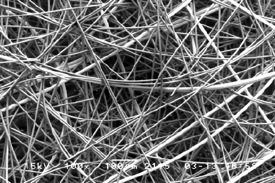A typical passive diesel fuel filtration system installed on a HPCR injected engine uses both a primary filter and secondary filter to achieve the desired cleanliness level. The primary filter is typically installed on the suction side of the low-pressure fuel pump, with the secondary filter on the pressure side. Again, manufacturers will modify these designs depending on requirements of the engine and their research into what they believe works best.The primary filter is generally required to remove larger particles that can damage the low-pressure pump and also separate undissolved water from the fuel. The secondary filter is generally designed to remove the smaller particles, around 4μm, which are known to damage the downstream engine components such as the high-pressure fuel pump and the fuel injectors. Some new filter designs use a single-stage system that incorporates the water removal capability of the primary filter with the high efficiency particle removal of the secondary filter.Two-stage systems sometimes use a coalescing or silicon treated filter for water removal and a surface filter for particle removal. The two-stage system typically utilizes media derived from cellulose or a cellulose/glass composite. The secondary filter can be a finer cellulose composite media, or in the most advanced systems now being used on HPCR injection systems, a fully synthetic glass fiber filter media.Single-stage systems typically use a single filter with a multilayer composite structure. The current state-of-the-art filter designs now use a melt blown glass media formed on or laminated to, a nanofiber substrate support and typically bonded with a Phenolic or Epoxy resin.
